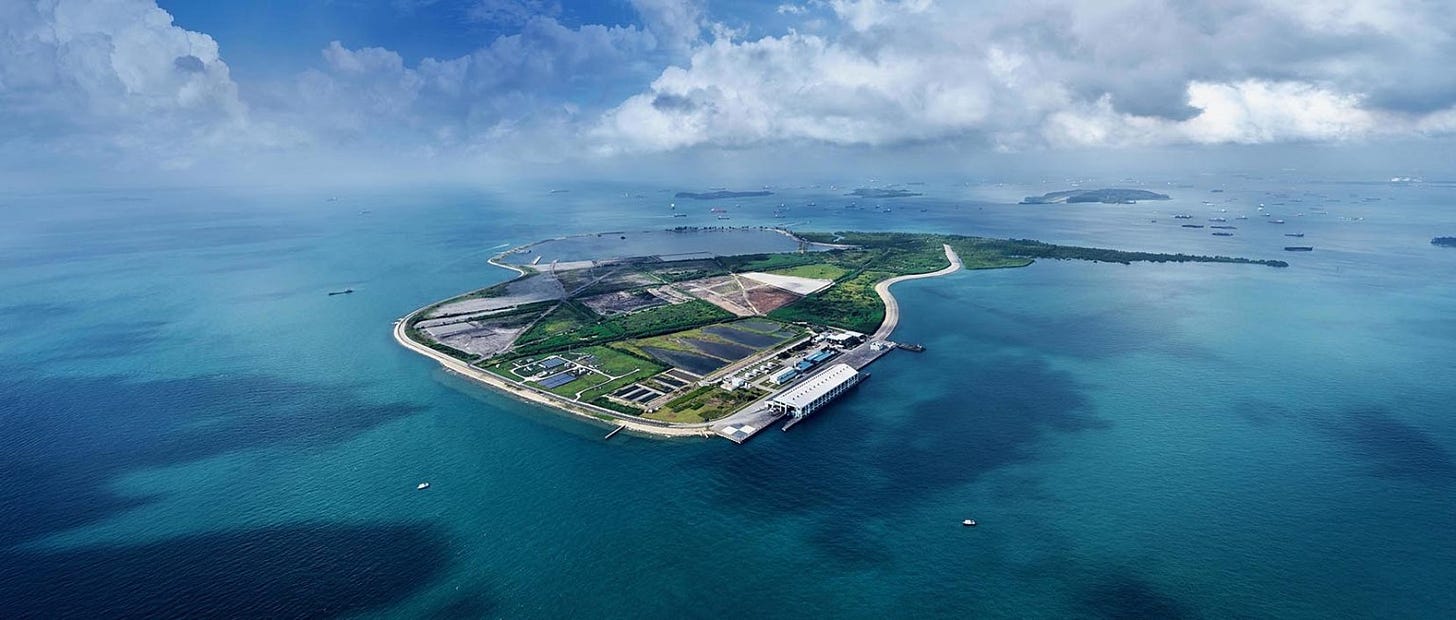Deep dive: Singapore's circular economy strategy
Small country, big moves — learn about the nation's Zero Waste Masterplan, Green Plan 2030, and more!

Although Singapore contributes only 0.1% of global emissions, the nation plays its part as responsible global citizens that work to mitigate climate change.
Apart from boosting climate resilience, the nation acknowledges that climate initiatives also play pivotal roles in building resilience in resource management and strengthening its economy, too.
With only 730 square kilometers of land and a growing population, Singapore faces unique challenges. Its only landfill located in Semakau Island is estimated to run out of space by 2035!

Situated eight kilometers off Singapore’s Southern Coast, this small island is home to a 3.5 square-kilometer space that holds all the trash of Singapore’s 5.9 million people.
Before you think of how smelly and horrendous the landfills of trash must be, think again.
Apart from the island being stench-free as most of its trash is incinerated on its mainland before being transported to the landfill as ash, Semakau Island is a green sanctuary home to coral reefs, mangroves, and rare birds like Great-billed Herons.
“Semakau Landfill is a place of contradictions, a land of stark yet striking contrasts. Dubbed a ‘Garbage of Eden’, a ‘Dump Wonderland’ and an ‘Island paradise built on a garbage dump’ by visiting journalists on a mission to discover Singapore’s unique solution for solid waste disposal, the island is a landfill that defies conventional expectations by doubling as a habitat for native biodiversity.”
—Marcus Ng, A History of Semakau Landfill (Source: roots.gov.sg)
Considering these factors, Singapore’s transition to a circular economy is far from being merely optional but is essential for the nation’s long-term survival.
In this deep dive, we take a look at the frameworks and measures that Singapore implements to foster a circular economy and mitigate climate change.
Key Pillars of Singapore’s Circular Economy Strategy
1. Zero Waste Masterplan (ZWM)
Launched in 2019, the Zero Waste Masterplan is central to Singapore’s sustainability efforts by focusing on reducing waste and fostering a circular economy.
Key Goals:
🗑️ Reduce waste to Semakau Landfill by 30% by 2030
♻️ Achieve a 70% overall recycling rate by 2030
Focus Areas:
Food Waste: Initiatives like food redistribution and anaerobic digestion convert waste into energy
E-Waste: Extended Producer Responsibility (EPR) schemes ensure manufacturers recycle their products
Packaging Waste, including Plastics: Mandatory packaging data reporting and a beverage container return scheme encourage recycling
Source: National Environment Agency (NEA)
2. Resource Sustainability Act (RSA)
Introduced in 2019, the Resource Sustainability Act enforces Singapore’s waste reduction efforts by targeting high-waste streams with mandatory regulations.
Key Goals:
🌾 Reduce food waste with mandatory reporting and redistribution initiatives
📱 Recycle E-Waste through nationwide take-back systems for electronics
📦 Manage packaging waste through “producer responsibility schemes”
Source: Republic of Singapore Government Gazette
3. Circular Water Management
Singapore transforms water scarcity into innovation with the "Four National Taps" strategy to ensure a sustainable water supply.
Key Innovations:
🇸🇬 Local Catchment: Rainwater captured through waterways and reservoirs
🇲🇾 Imported Water: Drawing up to 250 million gallons of water a day from the
Johor River in Malaysia under the 1962 Water Agreement
💧 NEWater: Ultra-clean, recycled water provides 40% of current water demand
🌊 Desalination: Advanced processes convert seawater into drinking water
Source: Public Utilities Board (PUB) Singapore
4. Green Financing and Innovation
To accelerate the transition, Singapore invests heavily in research and innovative solutions to encourage sustainable practices.
Key Initiatives:
💸 SG Eco Fund: $50 million fund to support community environmental projects
🔬 RIE (Research, Innovation and Enterprise) 2025 Plan: Invests in circular
economy research and development
🌱 Green Bond Framework: Incentives for businesses to adopt sustainable
practices
Sources: SG Eco Fund, RIE2025, Green Bond Framework
5. Singapore Green Plan 2030
Introduced in 2021, the Green Plan charts ambitious and concrete targets over the next 10 years, strengthening Singapore’s commitments under the UN’s 2030 Sustainable Development Agenda and Paris Agreement.
Moreover, it positions the country to achieve its long-term net-zero emissions aspiration by 2050.
Key Targets:
☀️ Quadruple solar energy deployment by 2025
🗑️ Reduce the waste sent to landfill by 30% by 2030
🏫 At least 20% of schools to be carbon neutral by 2030
🚗 All newly registered cars to be cleaner-energy models from 2030
🌳 Plant 1 million more trees
Source: SG Green Plan
UPDATE as of February 13, 2025: Singapore announced updated greenhouse gas emissions targets for 2035, aiming to reduce emissions between 45-50 million tonnes (Mt), down from approximately 60Mt in 2030. This new target was submitted to the UN on Feb 10, the official deadline for countries to submit their 2035 targets.
This ambitious goal aligns with Singapore's commitment to achieving net-zero emissions by 2050.
Stay tuned for more deep dives on other Southeast Asian countries in the following weeks!
—Danna from SEArcularity
P.S. Are you a business, organization, or individual with circular ideas you’d like to share? Comment below or email hi@searcularity.com for a potential feature 👋🏼

